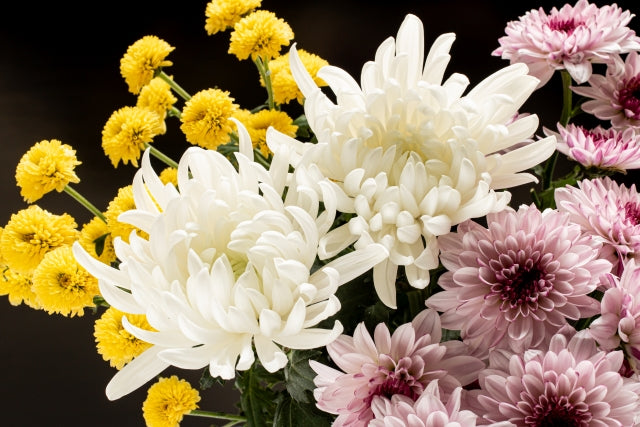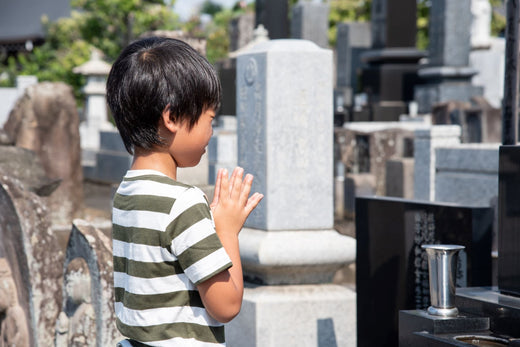
If you are invited to a memorial service, here is a complete guide to what to wear, how to greet people on the day, and how to attend | What to do if you are unable to attend
- Introduction
- If you are invited to a memorial service
- Dress code for participation
- What to do if you are absent from a memorial service
- Sending gifts and offerings by mail
- If you are invited to Obon
- Sample letter of apology for missing a memorial service
- When holding a memorial service for two people together
- What if you are invited to a grave opening ceremony?
Introduction
As a general rule, if you are invited to an annual memorial service such as the first or third anniversary of a death, it is good manners to attend.
It is an important opportunity to remember the deceased and comfort their family, so please attend if possible.
However, since memorial services are something you attend by invitation, please refrain from asking about the date, time, and location in advance.

If you are invited to a memorial service
At Buddhist memorial services, it is common to write "Gobutsuzen" (offering in advance) on a condolence envelope, wrap it in cash, and bring it with you.
In the past, people would sometimes bring offerings such as incense or flowers, but nowadays it is more common to just give cash.
The amount will vary depending on your relationship to the deceased, but a rough guideline is around 5,000 to 10,000 yen.

In Shinto and Christian traditions, it is also common to wrap cash.
However, the bags and inscriptions used will be appropriate for each religion.
In the case of Christianity, a white envelope or a commercially available bag with the words "flower donation" written on it is used, while in the case of Catholicism, it may be written "mass donation."

On the day of the memorial service, arrive 20 to 30 minutes before the start and greet the bereaved family.
You should greet the deceased in a polite manner, such as "Thank you for inviting me today. I would like to offer prayers together with you," and hand over the offering you brought with you.

Dress code for participation
Until the first anniversary, the host will wear mourning attire, so attendees should dress accordingly. Men should wear a black or dark suit. A white shirt and a black or gray tie are recommended.
Women should wear black, gray, or dark blue suits or dresses. Accessories should be kept to a minimum. For Japanese clothing, choose plain, plain colors such as gray, and black or other plain colors for the obi and sandals.
From the third anniversary onwards, plain, casual clothing is fine. A dark suit or dress with a little extra flair is also fine.
However, avoid bright colors, patterns, and revealing clothing, and choose clothes with a calm atmosphere. It is also important to keep accessories to a minimum.

What to do if you are absent from a memorial service
If you are unable to attend a memorial service due to unavoidable circumstances, contact the organizers in advance and express your apologies.
You can either include a statement of apology in your reply to the invitation or make a phone call to apologize.
It is important to contact the deceased as early as possible without putting it off. After that, send a gift or offering, flowers, etc. so that it arrives by the day before the memorial service.

Sending gifts and offerings by mail
If you are giving an offering, it is common to put it in a condolence envelope and send it by registered mail. Include a letter to express your feelings of remembrance for the deceased.
It is a good idea to choose offerings that the deceased liked, such as incense, fresh flowers, fruit, or sweets.
However, different religions have different things to avoid.
For example, incense should not be used at Shinto or Christian ceremonies. If you are sending fresh flowers, be sure to inform the florist of your religion so they can select appropriate flowers.

If you are invited to the Obon festival
Shinbon is the first Obon festival celebrated 49 days after the death of a person.
Relatives and close friends gather together to respectfully welcome and hold a memorial service for the spirit of the deceased.
In particular, there is a custom of displaying Bon lanterns on eaves or near Buddhist altars and lighting them at night to ensure that the spirits of the deceased do not get lost.
The period of Obon varies by region, but it is generally observed from July 13th to July 16th, although some regions celebrate Obon in August.
It is customary to give a Bon lantern when invited to a Shinbon festival.
Traditionally, a pair of white lanterns bearing the recipient's family crest were given as gifts, but in recent years, pale-colored lanterns that can be used again the following year or lanterns with autumn grass patterns have become popular.
If you want to give the recipient the freedom to choose, you can also give cash as an offering to the Buddha.
Bon lanterns can be purchased at Buddhist goods stores and department stores.

Sample letter of apology for missing a memorial service
Dear Sir/Madam
Thank you very much for informing me about the third anniversary of my aunt's death.
This is the memorial service for my aunt who was very kind to me, and I wanted to pray for her soul to rest in peace with her family, but due to my mother's health, I am unable to travel far away.
I am very sorry, but I would like to be unable to attend the memorial service on the day.
We are very sorry for any inconvenience caused and kindly ask for your understanding.
As a token of my gratitude, we will send you some flowers as an offering at a later date, and we hope you will place them at the altar.
On the day, we will be singing together with you all, although from a distance.
Sincerely yours

When holding a memorial service for two people together
The first and third anniversaries are usually held separately, but if subsequent memorial services are concentrated within a year, they are often held together.
In these cases, one offering is usually enough, although it may be a good idea to give a little more as a token of appreciation.

What if you are invited to a grave opening ceremony?
When a new grave is built and an eye-opening ceremony is held, it is customary to give a gift of congratulations.
The gift should be wrapped in a gift envelope with a red and white bow and Mizuhiki, with "Congratulations on the erection of the gravestone" or "Congratulations on the opening of the tombstone" written on the envelope, and brought on the day. The same applies if the tomb was erected during the deceased's lifetime.
However, if a memorial service is held at the same time as the eye-opening ceremony, the offerings for the celebration and the memorial service may be combined and wrapped in a condolence envelope.
In this case, the inscription should read "Gobutsuzen" (present for the Buddha) and the mizuhiki (a string with a yellow and white knot) should be used. It can also be written as "Tombstone Construction Offering" or "Gegan-kai Offering".




